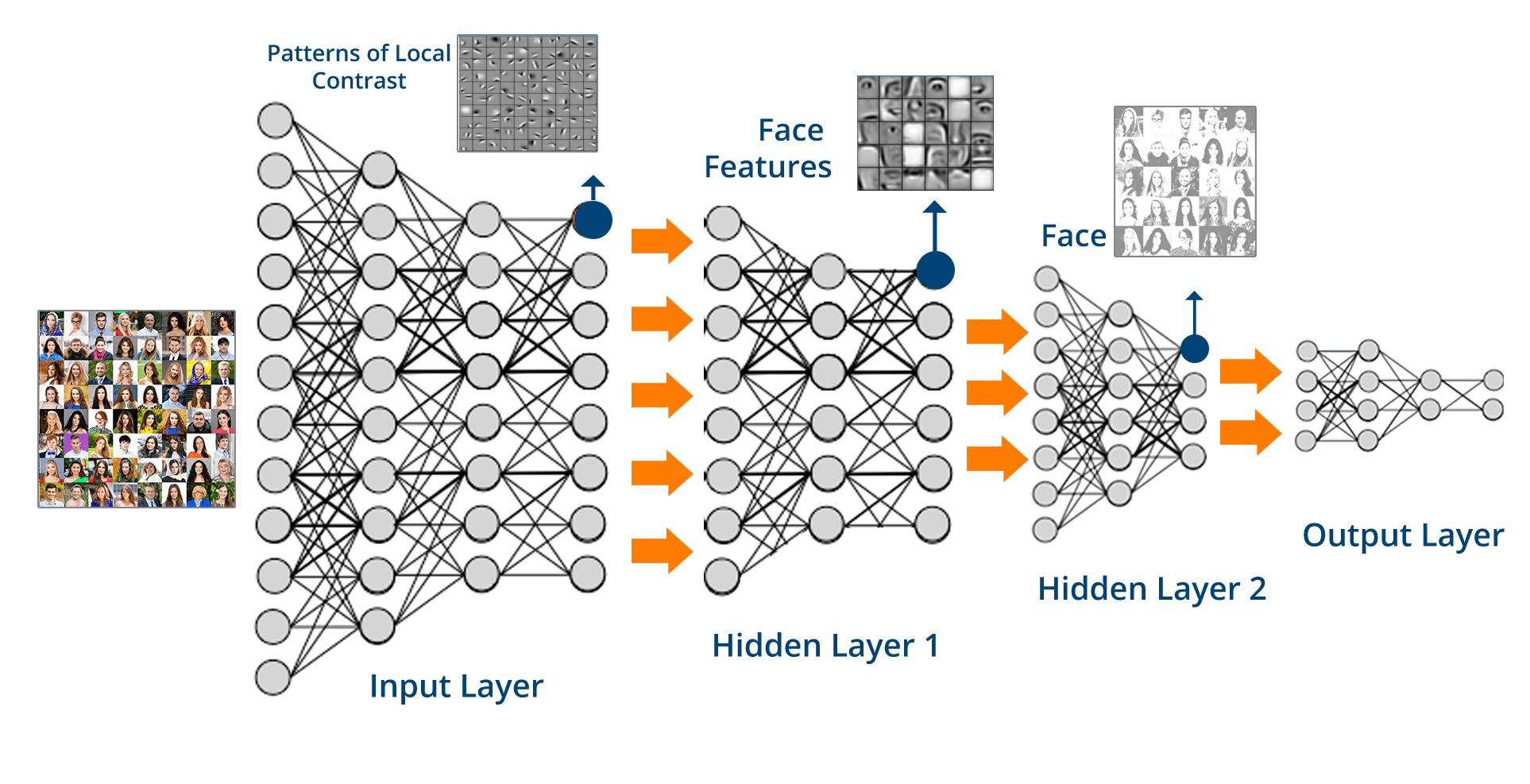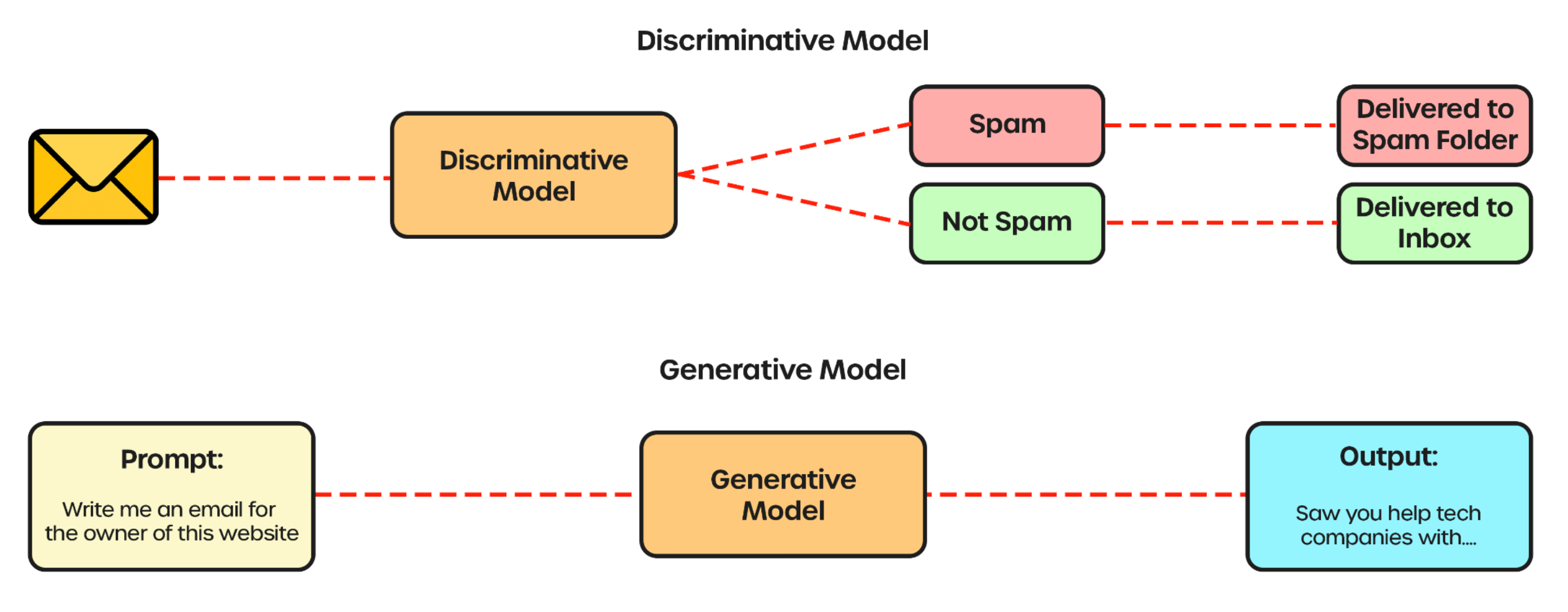AI & Machine Learning
The AI Landscape
Exploring the current state and future of artificial intelligence across industries and technologies.
The AI Landscape Overview
This visual map shows how different AI technologies relate to and build upon each other. Each section below explores these areas in detail.
Interactive overview showing the relationships between AI, Machine Learning, Deep Learning, Computer Vision, NLP, and Robotics
What is Artificial Intelligence?
Artificial Intelligence (AI) is like giving computers a "brain" that can think, learn, and solve problems similar to how humans do. Instead of just following pre-written instructions, AI systems can adapt, make decisions, and improve over time.
Real-world example: Think of ChatGPT as a very smart assistant that has "read" millions of books and articles. When you ask it a question, it doesn't just copy-paste an answer—it understands your question and creates a thoughtful response, just like a knowledgeable friend would.
Machine Learning (ML)
Machine Learning is a subfield of AI that enables computers to learn patterns and make predictions from data without being explicitly programmed. It includes four main approaches:
- Supervised Learning
- Unsupervised Learning
- Deep Learning
- Reinforcement Learning
What makes ML so exciting:
Its ability to make predictions or decisions on things it wasn't explicitly trained to handle. This contrasts sharply with traditional computing, which requires specific instructions to perform any task.
Traditional Computing
Requires explicit programming for every possible scenario and task.
Machine Learning
Learns patterns from data and can handle new, unseen situations.
Supervised Learning
Supervised Learning operates by using labeled datasets to train a model, enabling it to understand the relationship between input data and output labels. This process is akin to teaching a child with examples: by showing them what the correct answer looks like, they learn to recognize patterns and make predictions.
Step-by-Step Example: House Price Prediction
● Dataset
A real estate company has thousands of house records with attributes like size, location, number of bedrooms, age, amenities and their corresponding actual sale prices. Each house has labeled data - the features (inputs) and the known price (output).
● Training Phase
The supervised learning model examines the dataset, identifying patterns and relationships between house attributes (inputs) and prices (outputs). For instance, it might learn that larger houses in desirable locations are pricier, or that an extra bedroom increases value.
● Learning Process
Involves adjusting the model's parameters to minimize the difference between its predicted prices and the actual prices in the dataset, often through optimization algorithms that iteratively improve accuracy.
● Prediction
After training, the model can predict the price of a new house based on its attributes. Inputting details such as size, location, and number of bedrooms allows the model to generate an estimated price based on learned patterns.
Unsupervised Learning
Unsupervised Learning refers to a training approach designed to uncover hidden patterns or structures in unlabeled data, without the need for predefined output labels, making it ideal for exploratory data analysis, uncovering hidden correlations, or discovering natural groupings within data.
Step-by-Step Example: Housing Market Segmentation
● Dataset
A real estate company has thousands of house listings with attributes like size, location, age, amenities, architectural style, but no predefined categories or price targets. They want to discover natural groupings in their housing inventory.
● Analysis Phase
The unsupervised learning model processes this data to find natural groupings or clusters among the houses. For instance, it might discover clusters like "luxury waterfront homes", "family suburban houses", or "urban compact apartments" based on similar characteristics.
● Discovery Process
The model iteratively adjusts its parameters to better cluster the housing data. This process often involves techniques like k-means clustering or hierarchical clustering that organize houses into groups with similar characteristics such as price range, neighborhood type, and house features.
● Application
Once housing clusters are defined, the real estate company can then tailor its marketing strategies to each specific group. For example, marketing luxury waterfront homes to high-income buyers, or family suburban houses to families with children, improving customer targeting and sales.
Reinforcement Learning
Reinforcement Learning is a powerful method where a model learns to make decisions by interacting with its environment, aiming to maximize rewards over time. This approach is fundamental for achieving autonomy in machines, allowing them to perform complex tasks without explicit instructions.
Step-by-Step Example: Maze Navigation
● Environment
A maze with walls, open paths, a starting position, and a goal location. The environment provides feedback signals - the agent can move in four directions (up, down, left, right) and receives information about valid moves, walls, and current position.
● Learning Process
The AI agent takes actions by moving in different directions and receives rewards or penalties based on outcomes. Positive rewards for reaching the goal or getting closer, negative penalties for hitting walls or taking longer paths.
● Adaptation Phase
Through trial and error over many attempts, the agent learns optimal strategies. It discovers patterns like "avoid dead ends", "remember successful paths", and continuously improves its navigation policy to find the shortest route to the goal.
● Application
The trained agent can now efficiently navigate any similar maze without prior knowledge of the layout. It adapts to new maze configurations, obstacles, and goal locations, consistently finding optimal or near-optimal paths using learned navigation strategies.
Deep Learning
A machine learning subset that uses artificial neural networks with multiple layers to learn data's hierarchical representations. Deep learning automatically discovers patterns at different levels of abstraction, from simple features to complex concepts, making it particularly powerful for tasks involving images, speech, and text.

How Deep Learning Works - Layered Learning:
Layer 1 (Input): Recognizes basic features like lines, edges, and simple shapes
Layer 2-3 (Hidden): Combines basic features into parts like eyes, wheels, corners, textures
Layer 4-5 (Abstract): Assembles parts into objects like faces, cars, buildings
Output Layer: Makes final classification: "This is a cat!" or "This person is happy"
Generative AI
The "G" in GPT stands for "Generative," a key concept that distinguishes GPT and other generative models from non-generative AI models. The main difference is:
Generative vs. Non-Generative AI:
• Non-generative (discriminative) models: Make decisions or predictions based on input.
• Generative models: Create new content based on their training data.

Common Types and Examples:
● Text-to-Text (T2T): Models that take text input and generate text output (e.g., GPT-4, ChatGPT, BERT).
● Text-to-Image (T2I): Models that generate images based on textual descriptions (e.g., DALL-E, Midjourney, Stable Diffusion).
● Text-to-Speech (T2S) or Speech Synthesis: Models that convert written text into spoken words (e.g., Google Text-to-Speech, Amazon Polly, WaveNet).
● Speech-to-Text (S2T) or Speech Recognition: Models that transcribe spoken words into written text (e.g., Google Speech-to-Text, Amazon Transcribe, DeepSpeech).
● Image-to-Image (I2I): Models that transform or generate new images based on input images (e.g., Midjourney, DALL-E 3, Pix2Pix).
● Image-to-Text (I2T) or Image Captioning: Models that generate textual descriptions of input images (e.g., Show, Attend and Tell; Microsoft CaptionBot).
● Text-to-Video (T2V): Models that generate video clips based on textual descriptions (e.g., SORA).
● Text-to-3D (T23D): Models that generate 3D models or scenes based on textual descriptions (e.g., DALL-E for 3D (not yet released), DreamFusion).
Computer Vision
This AI subfield aims at teaching machines to interpret and understand visual data, enabling object recognition, scene analysis, and environmental understanding. Computer vision systems can process images and videos to extract meaningful information, making decisions based on what they "see."
Core Computer Vision Tasks:
Object Detection
Identifying and locating objects within images
Image Classification
Categorizing entire images into predefined classes
Image Segmentation
Dividing images into meaningful regions or segments
Motion Analysis
Tracking movement and changes over time in video
Natural Language Processing (NLP)
NLP enables machines to process, understand, and generate human language, including tasks such as speech recognition, language translation, and text analysis. It bridges the gap between human communication and computer understanding, allowing machines to work with unstructured text and speech data.
Key NLP Capabilities:
● Sentiment Analysis: Determining the sentiment conveyed in text.
● Machine Translation: Converting text from one language to another.
● Speech Recognition: Transcribing spoken words into written text.
● Text Summarization: Condensing large bodies of text into concise summaries.
● Named Entity Recognition: Identifying and classifying named entities.
Remember: AI is not magic—it's sophisticated pattern recognition and data processing that mimics human-like intelligence in specific tasks.